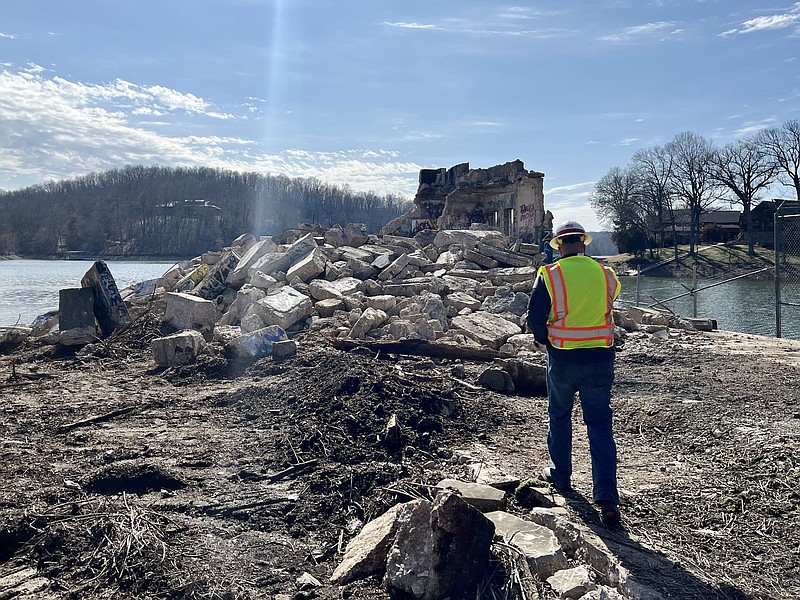The Oklahoma Row tower, one of the last remaining hotel structures at the historic resort town of Monte Ne, stood for over 100 years -- until Tuesday.
The three-story tower of the former Oklahoma Row hotel didn't take long to knock down, according to Jay Townsend, executive officer of the U.S. Army Corps of Engineers' Little Rock District.
A contractor was on site several miles southeast of Rogers on Tuesday morning to remove part of the former hotel's foundation and basement, he said. During a test, the contractor pushed on the Oklahoma Tower structure with an excavator, which caused a portion of the tower to fall, Townsend said.
"A quick push and there it went," he said.
Crews then continued the demolition, which had been planned for Thursday.
PRESERVING HISTORY
Monte Ne was one of many resort towns in Arkansas and the U.S. offering tourists a retreat to natural beauty during the early 20th century. Its story represents a "milestone" in the tourism history of the Ozarks, a region now attracting people across the world with mountain biking trails and scenic rivers, according to Angie Albright, director of the Shiloh Museum of Ozark History.
In the first half of the 20th century, the three-story concrete structure known as Oklahoma Tower was a bookend to the wooden Oklahoma Row hotel, one of three Monte Ne hotels. William "Coin" Harvey, a Chicago resident who gained a small fortune and national fame as an advocate of the free silver movement, founded the resort town after visiting Rogers on the campaign trail of William Jennings Bryan's 1896 presidential bid.
The first hotel opened in Monte Ne in 1901. By 1917, the resort town had proved largely unsuccessful, historian Brooks Blevins wrote in his book "A History of the Ozarks, Volume 3: The Ozarkers."
Oklahoma Row, as indicated by its name, sought to attract "Tulsans bathed in oil money," according to Blevins. Harvey launched a railroad from Lowell to Monte Ne. An imported Venetian gondola took visitors across a pond from the train depot to the hotels. The town boasted a golf course, tennis court, dance pavilion and the state's first indoor swimming pool.
Oklahoma Row, and the accompanying Missouri Row, were both over 300 feet long and the longest log structures in the world at the time, according to Serena Barnett, director of the Rogers Historical Museum. A foundation and a concrete structure from the Missouri Row hotel are still at the site. Oklahoma Tower was also one of the earliest examples of a reinforced concrete structure in the state, according to Townsend.
After the resort became a financial disappointment, Oklahoma Row was sold in a foreclosure sale in 1927, according to the Rogers Historical Museum's website.
The Rogers and Shiloh Museums are both involved in preserving pieces of the building, a process which will continue into March.
Albright said she understood concerns and nostalgia about the structure coming down, but added, "There are better ways to tell the story of Monte Ne."
Museum staff members walked through the site last week to identify pieces of Oklahoma Tower they hoped to preserve in their collections. The museums plan to develop interpretive signage at the site for a trail around the Monte Ne area. The signage would use photos from the museums' archives to show what was once there, Albright said.
VARIETY OF VISITORS
After the damming of Beaver Lake in the 1960s, parts of the old resort town were flooded. The log structure of Oklahoma Row was moved about a mile north along Arkansas 94, where it stands today in decrepit form. Harvey's grave was moved to avoid the water and now rests on private property.
The Monte Ne ruins have hosted many residents interested in remembering the site's better days, but also plenty of other visitors with no interest in history.
The Oklahoma Row site -- which remains completely above water during normal lake levels -- has attracted a significant amount of trespassers, though it has been behind a chain-link fence for over a decade, according to the Corps of Engineers. The Corps assumed responsibility for management of the historic property after the creation of the lake.
Alan Bland grew up around Beaver Lake and said he has childhood memories of standing on the Oklahoma Row foundation while fishing with his grandparents. Bland, a retired park ranger who spent three-and-a-half decades with the Corps, said knocking down the tower was "a good thing."
Corps efforts to keep people out of the building ultimately never worked, according to Bland. Over the years, graffiti became common and people were injured by jumping off the top of the building into the lake below, he said. People have also been found on the site doing drugs and, in at least one instance, a person was stuck in the building's chimney, he said.
"As far as the Corps of Engineers is concerned, it's been kind of a pain in the butt," he said. "It's sad it's come to this point, but it is what it is. I'm glad it was torn down because it was a mess."
The decision was a difficult one and was ultimately influenced by safety concerns, Townsend said.
When the Corps removed the stairs in the building years ago, people chiseled a route of hand holds to climb from the bottom to the top of the building, he said.
Park rangers often had to mend the fence, he said. Even the equipment staged for the tower removal was tagged in recent weeks, he said.
Efforts to preserve the site never materialized because no interested entities could ever produce the money needed, according to Townsend. Variable lake levels also posed a problem for the site, he said.
Preservation of the building and site would also be an ongoing expense, rather than a one-time cost, he said. The total estimated cost to remove the structure and preserve pieces for museum collections was $150,000, he said.
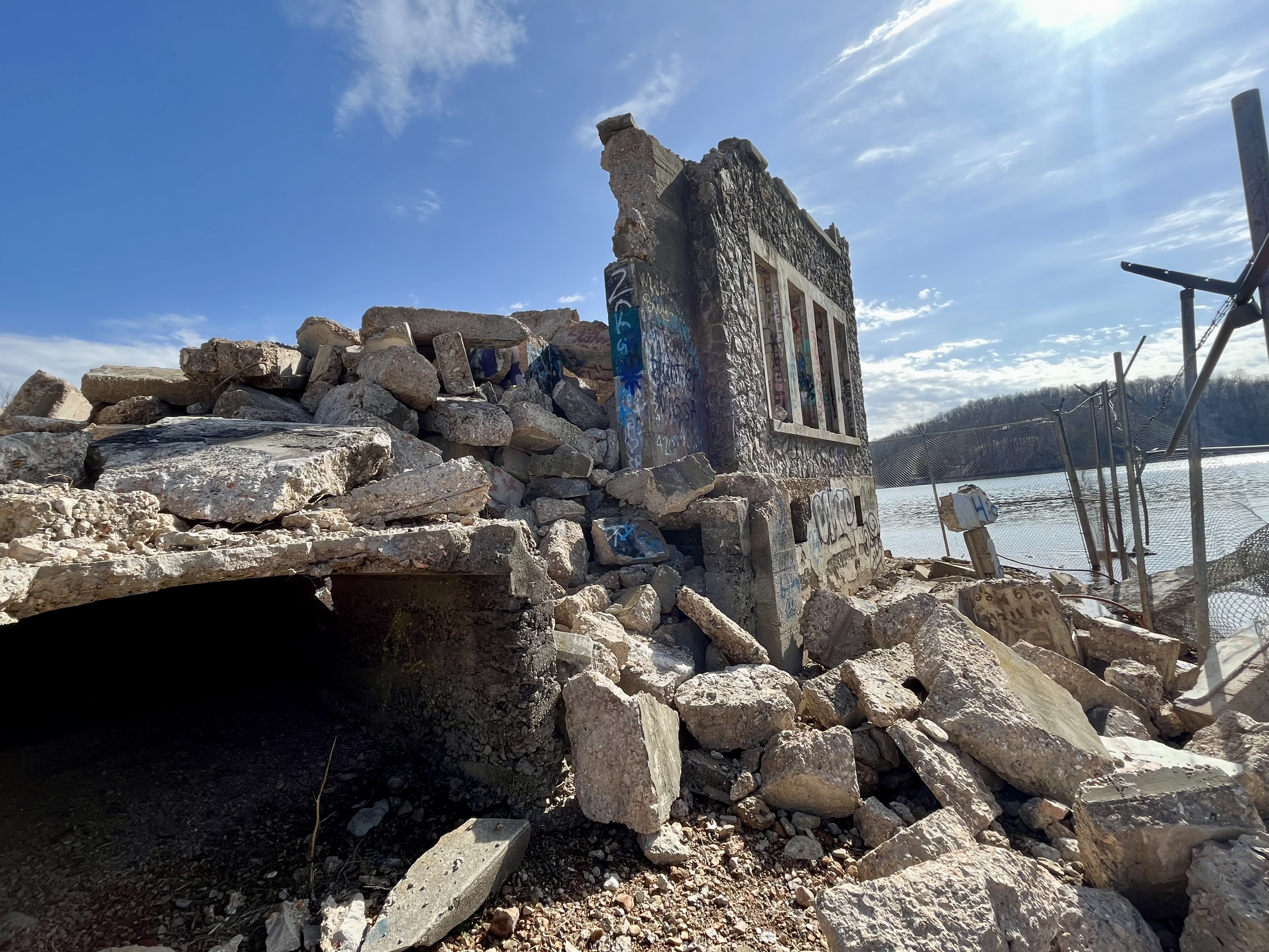 The ruins of the three-story Oklahoma Tower sit Thursday, Feb. 23, 2023, in Monte Ne. Local museums plan to work in the coming weeks to preserve pieces of the building before it is completely removed. The building, more than 100 years old, was toppled with an excavator on Tuesday. (Garrett Moore/NWA Democrat-Gazette)
The ruins of the three-story Oklahoma Tower sit Thursday, Feb. 23, 2023, in Monte Ne. Local museums plan to work in the coming weeks to preserve pieces of the building before it is completely removed. The building, more than 100 years old, was toppled with an excavator on Tuesday. (Garrett Moore/NWA Democrat-Gazette)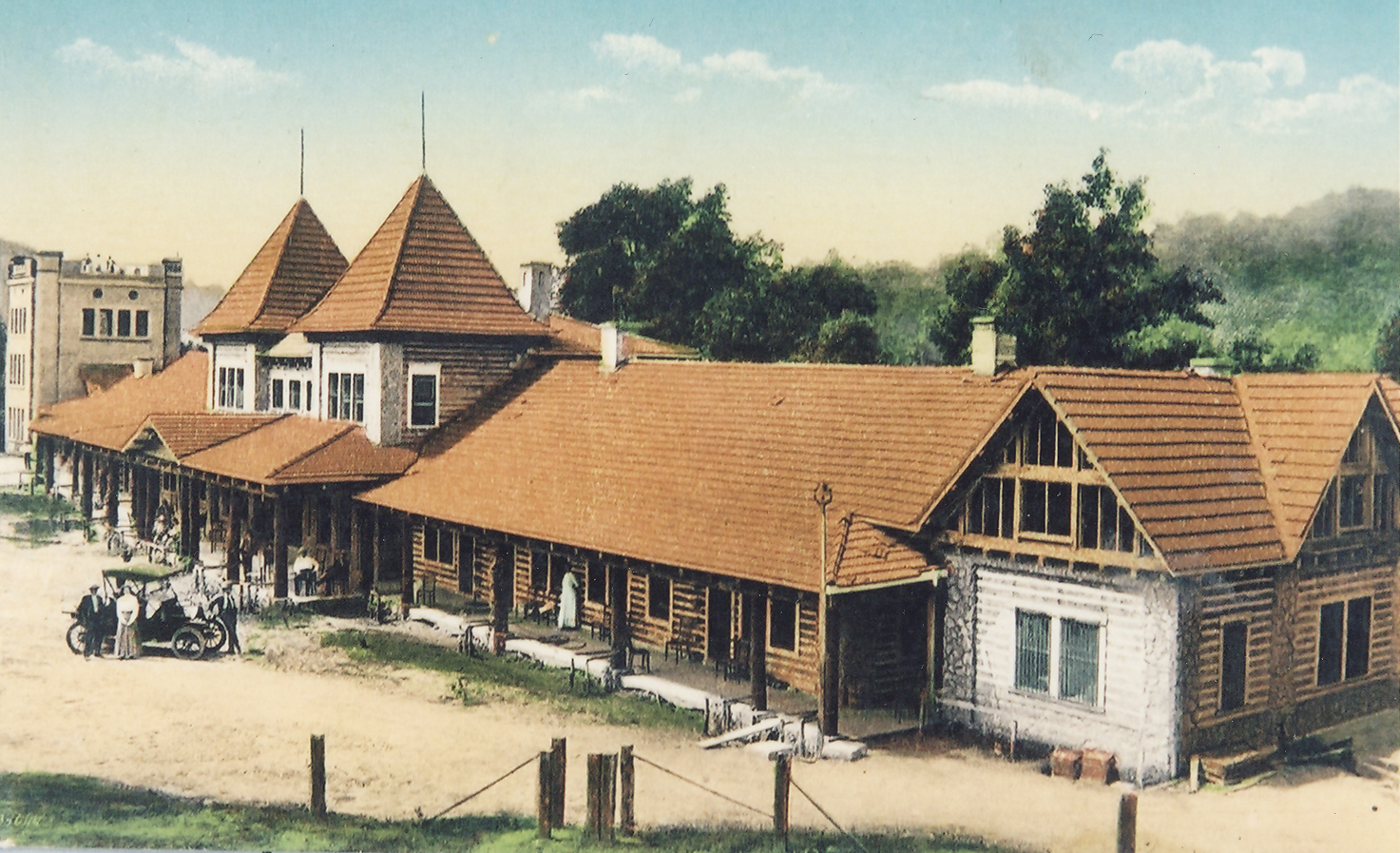 This photograph shows Oklahoma Row in 1911. Oklahoma Row and its sister hotel, Missouri Row, were both more than 300 feet long, making them the longest log structures in the world at the time, according to Serena Barnett, director of the Rogers Historical Museum. (Courtesy photo/Rogers Historical Museum)
This photograph shows Oklahoma Row in 1911. Oklahoma Row and its sister hotel, Missouri Row, were both more than 300 feet long, making them the longest log structures in the world at the time, according to Serena Barnett, director of the Rogers Historical Museum. (Courtesy photo/Rogers Historical Museum)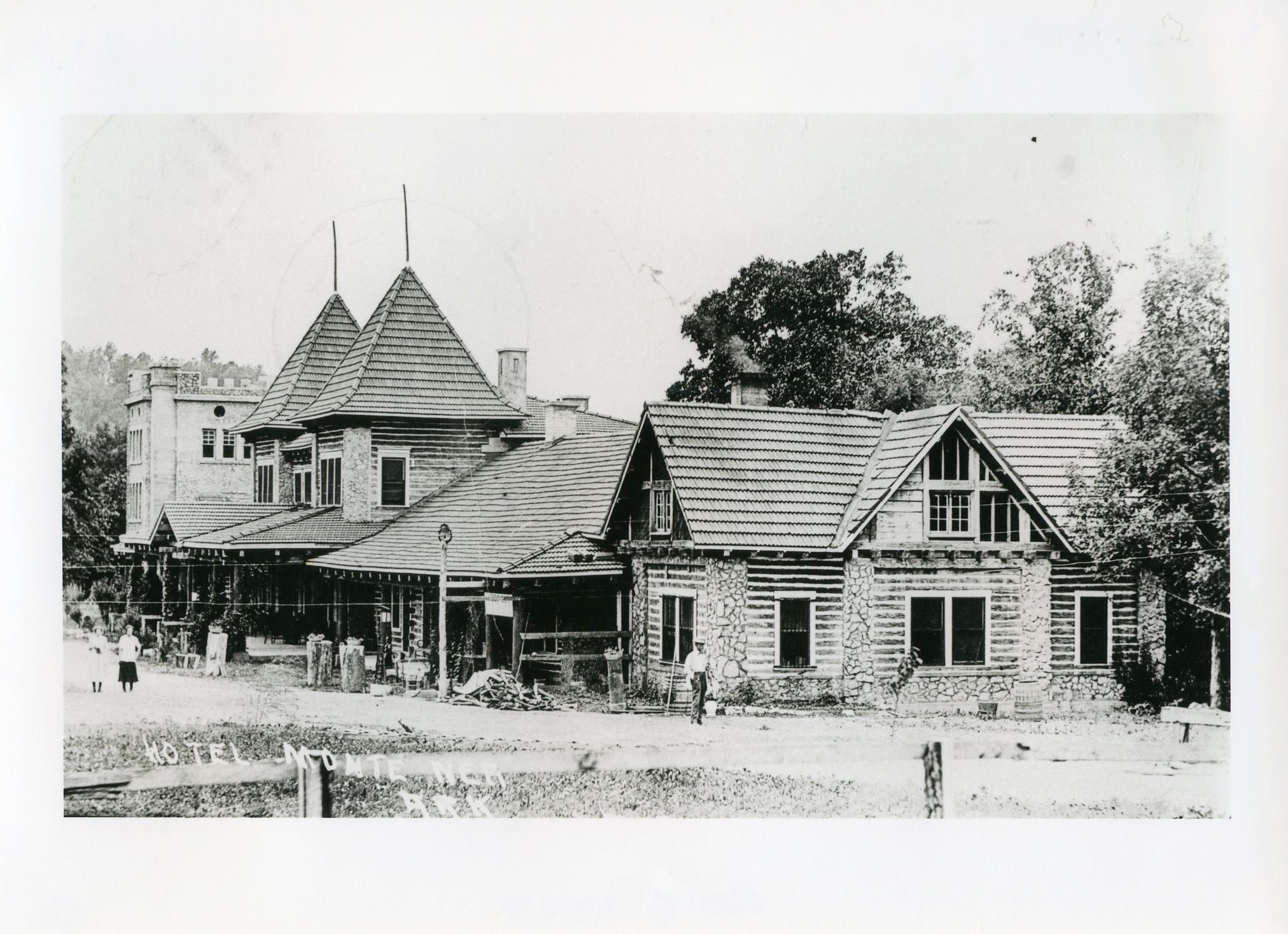 This photograph show Oklahoma Row in the resort town of Monte Ne. Oklahoma Row and its sister hotel, Missouri Row, were both more than 300 feet long, making them the longest log structures in the world at the time, according to Serena Barnett, director of the Rogers Historical Museum. (Courtesy photo/Shiloh Museum of Ozark History)
This photograph show Oklahoma Row in the resort town of Monte Ne. Oklahoma Row and its sister hotel, Missouri Row, were both more than 300 feet long, making them the longest log structures in the world at the time, according to Serena Barnett, director of the Rogers Historical Museum. (Courtesy photo/Shiloh Museum of Ozark History)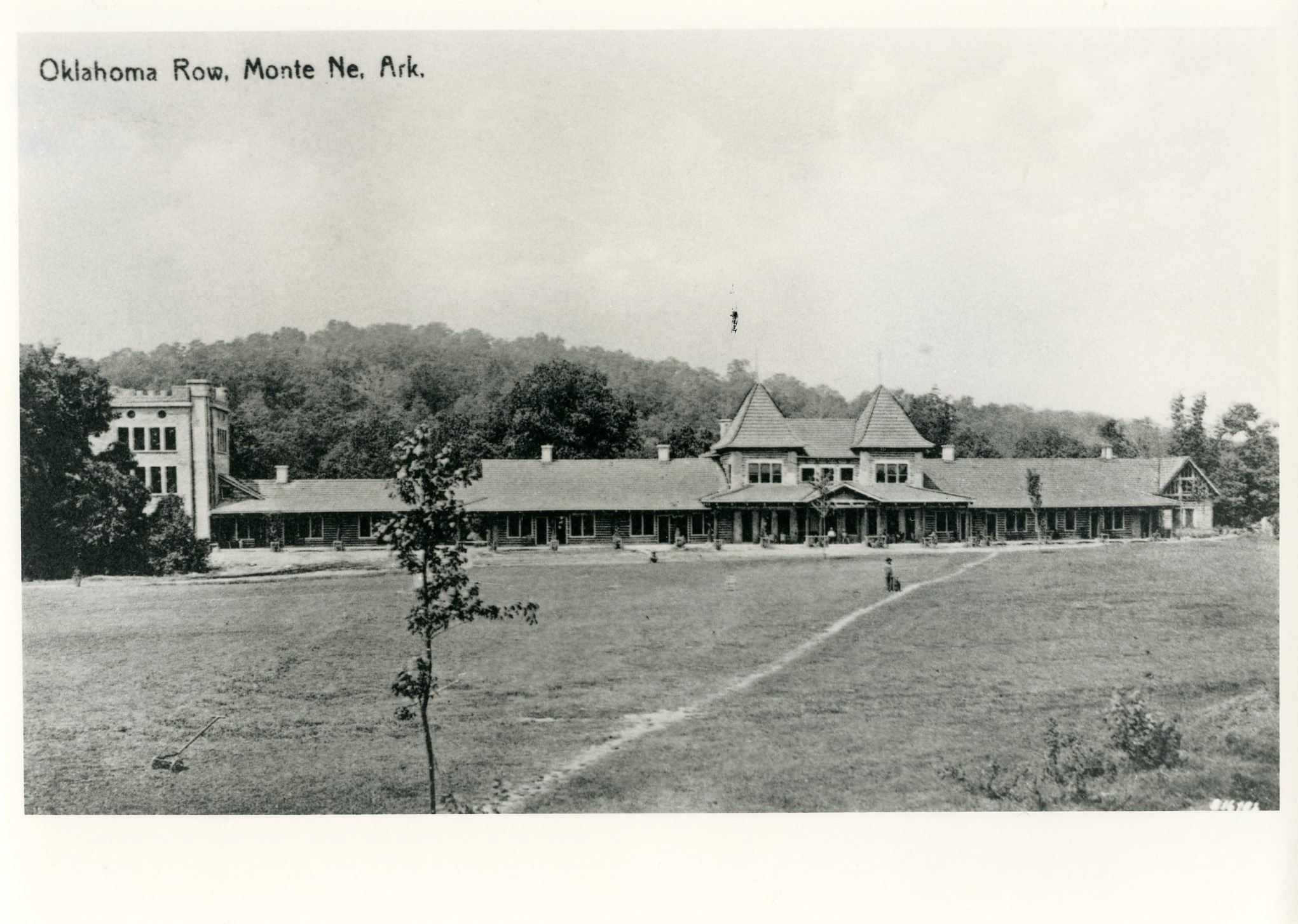 This photograph show Oklahoma Row in the resort town of Monte Ne. Oklahoma Row and its sister hotel, Missouri Row, were both more than 300 feet long, making them the longest log structures in the world at the time, according to Serena Barnett, director of the Rogers Historical Museum. (Courtesy photo/Shiloh Museum of Ozark History)
This photograph show Oklahoma Row in the resort town of Monte Ne. Oklahoma Row and its sister hotel, Missouri Row, were both more than 300 feet long, making them the longest log structures in the world at the time, according to Serena Barnett, director of the Rogers Historical Museum. (Courtesy photo/Shiloh Museum of Ozark History)
